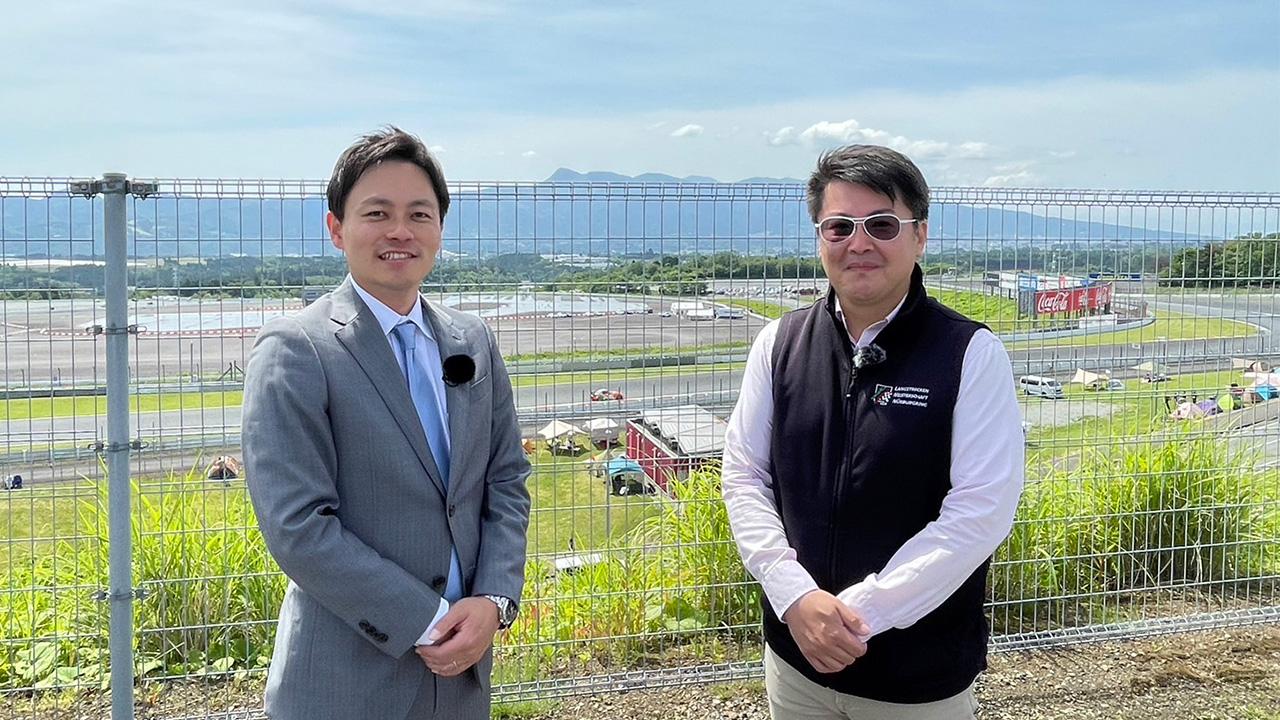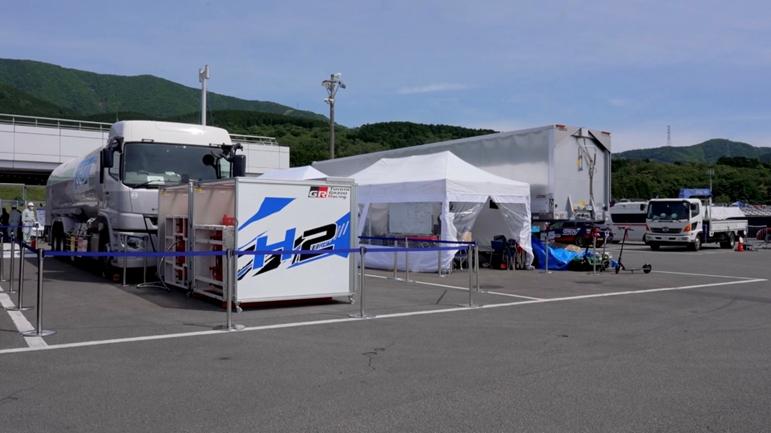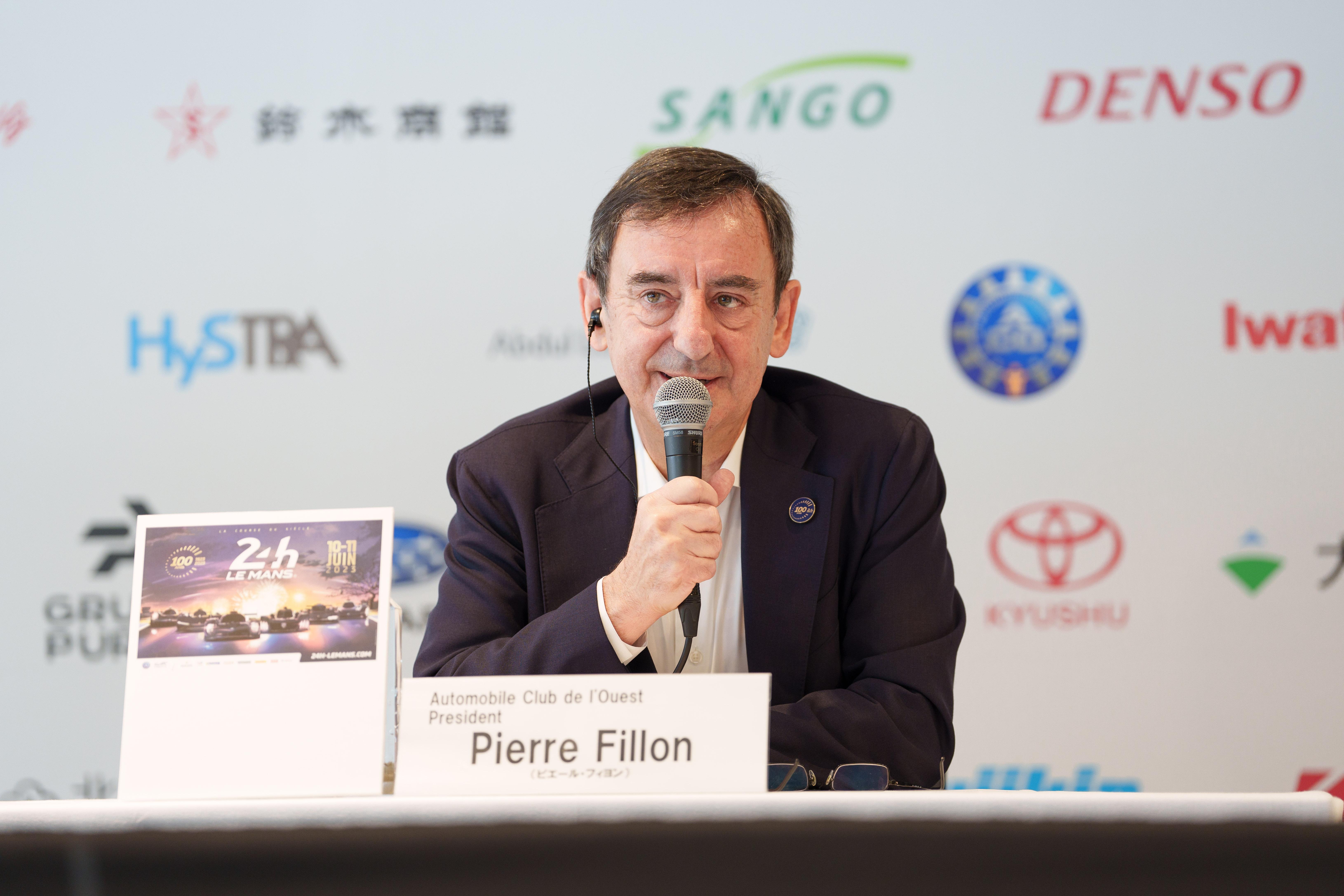
Hydrogen engines first appeared in endurance racing more than two years ago. Each season, Toyota Times speaks with Shinya Yamamoto, the automotive analyst who has kept a sleepless eye on the annual 24-hour challenge. Ahead of the race, what were his thoughts on this endeavor in its third year?

Having kicked off with a 24-hour race, Toyota’s hydrogen engine challenge is now in its third year.
Automotive analyst Shinya Yamamoto continues to follow this endeavor behind the scenes, and Toyota Times has been checking in with him each year.
As usual, we were very interested to hear Yamamoto’s unique take and his spot-on ability to sum up the challenge each season.
The first time around, Yamamoto called the hydrogen engine “a catalyst that unleashed our dreams,” in the way it had opened startling new possibilities for tackling carbon neutrality.
Last year, in the second season, he referred to internal combustion engines as our “allies.” In part, he was making a dig at the argument that engines were out of step with the times amid the hype around BEVs.
With the switch from gas fuel to liquid hydrogen, what words did Yamamoto use to describe Toyota’s challenge in its third year? Toyota Times reporter Kyonosuke Morita interviewed Shinya Yamamoto as before.
A new look behind the pits
Morita
Here we are, same place, same outfits, for the third year in a row! I’d like to hear your perspective this year again on how the hydrogen engine is evolving, and how the world is changing. You’ve changed, too…you’ve got new glasses again!
Yamamoto
I like a change! A new pair every year. I’m kidding, but I do try to keep evolving as well.
Returning to the same point of observation makes noticing changes all the easier.
Morita
Just like you, the hydrogen engine has taken a pretty big step this year.
Yamamoto
Shifting from gas to liquid.
Morita
Of course, things have also changed here behind the pits, where we stand every year.
Yamamoto
Firstly, the off-limits zone is gone!

Morita
Just a single tanker truck. I read that this single tanker carries enough fuel for three hydrogen Corollas to complete the 24-hour race.
Yamamoto
With hydrogen gas, they couldn’t refuel in the pits, but liquid makes that possible. There is a growing range of technology that can supply other teams who join in the future.
Liquid hydrogen technology has traditionally been used in rockets. In adopting it for cars, Toyota is looking to feed cutting-edge technology back into mass production. The world of rocketry suddenly feels much closer to hand.
Third year brings more honest talks
Morita
The first year started by showing that a hydrogen engine could actually work. You called it “a catalyst that unleashed our dreams,” then last year described internal combustion engines as our allies.
Where is the hydrogen engine now, in its third year?
Yamamoto
Everyone can now speak openly.
Until now, all anyone talked about was shifting to electric vehicles, while deep down knowing there were other options.
Now every manufacturer is saying the things that two years ago, only Toyota was able to say.
Automotive associations around the world are sharing the same message as the JAMA. I think it makes a big difference that everyone can now voice their honest opinions.
You can see that Chairman Akio’s genchi genbutsu approach really moves people.
Being able to speak openly has attracted more like-minded partners. For this season, five Japanese automakers have banded together to launch the Super Taikyu Waigaya Club.
Transcending company boundaries, this initiative helps the manufacturers discuss ways to popularize motorsports and achieve carbon neutrality.
Though they may be rivals in business, these companies have united in pursuit of carbon neutrality. As Yamamoto points out, this collaborative mindset is plain to see.
Seeing the future
Morita
With the change to liquid hydrogen, what do you see in store for this year’s 24-hour race?
Yamamoto
As I’ve said, there’s no more doubt. This is building on two years’ worth of effort and experience, so the future of this challenge is no longer unclear, and because of that, I think the finish line is probably within sight.
Naturally, being a race, problems are bound to come up, but the future is clearly in sight.
Morita
As usual, you’ll be here for the 24-hour race?
Yamamoto
I’ll be here the whole time. No sleep. Who knows what could happen.

Two hours after the interview, Pierre Fillon, president of the Automobile Club de l'Ouest (ACO) that organizes the 24 Hours of Le Mans, announced that hydrogen-powered cars will be allowed to race at Le Mans from 2026.
In Europe, BEVs enjoy a strong chorus of support. And yet, the continent’s most historic race is looking to hydrogen… Perhaps we’re starting to hear the whole world speak openly.

